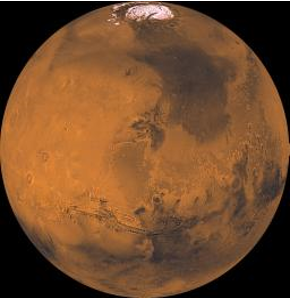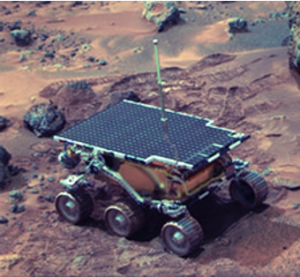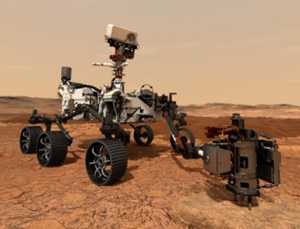By Whitney Bell
Exploring Mars, aka the “Red Planet,” is an ambitious, long-term goal of the National Aeronautics and Space Administration (NASA). The average distance between Mars and Earth is around 140 million miles. Since each planet circles around the sun in a unique orbit, however, the Earth and Mars can be as get as close as 34 million miles to each other!
Depending on factors like rocket speed and orbital position, it is estimated that a trip to Mars would take about 9 months. Shorter distance missions to the International Space Station (ISS, approximately 200 miles above Earth) and the moon (about 239,000 miles from Earth) offer valuable opportunities to test newly developed instruments and tools that could be used for Mars missions. Safe, sustainable living spaces, air systems and water systems are examples of the critical technologies that must be perfected for Mars missions.
Time is not the only obstacle astronauts face in their journey. Being far away from earth means that astronauts must have a high degree of self-sufficiency to combat communication delays and equipment failure. Medical emergencies also pose significant dangers. Due to the lack of gravity, movement of fluid in the head can cause vision problems. Muscle and bone density loss are also health risks in a reduced gravity environment, and social isolation can lead to mental stress, performance reductions, and other health problems.
While the ISS and moon missions will prepare astronauts to confront these dangers, another group of explorers is also responsible for providing critical information about Mars’ environment, the Mars rovers. So far, five rovers have been sent to Mars: Sojourner, Spirit, Opportunity, Curiosity, and Perseverance. These rovers have been crucial for understanding both the Red Planet’s climate and the chemical composition of its surface and atmosphere.
Launched in 1997, Sojourner was the first rover sent to Mars to take pictures and take chemical and atmospheric measurements. The rovers Spirit and Opportunity found evidence that water once existed on Mars. The layers of minerals in the rocks they collected indicate that Mars once had rivers and lakes on its surface, water underground, and atmospheric water. After determining that water had existed on Mars, scientists wondered if other conditions for life were also present on Mars. The Curiosity rover took rock samples and studied the composition to see if other components for life besides water were also present. Curiosity found evidence in rock samples including the elements carbon, hydrogen, nitrogen, and sulfur that suggest Mars might have supported ancient microbial life! Curiosity also determined that Mars’ atmosphere was composed of 95.9% carbon dioxide mixed with traces of other gases including argon, nitrogen, oxygen and carbon monoxide.
Most recently, the Perseverance rover launched from the Florida coast on July 31st, 2020 and is scheduled to land on Mars on February 18th, 2021 after 204 days of travel. Itsmission goals are to directly search for signs of ancient microbial life, store samples that could be returned to Earth by a future NASA mission, and gather information to help us prepare for human missions to Mars. This rover even carries an instrument designed to create oxygen from Martian atmospheric carbon dioxide and a helicopter, which will be the first aircraft controlled on a different planet.
We’ve still got a long way to go to get to Mars, but research conducted on the ISS, moon, and by the Mars rovers are making invaluable contributions to help us get there! Be sure to look outside on October 6, 2020, when Mars will be only 38.6 million miles from Earth and should appear large in the night sky.
Edited by Sarah Brotman and Alec Chaves



